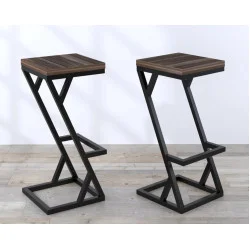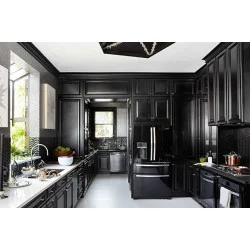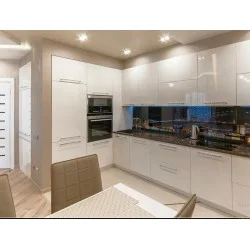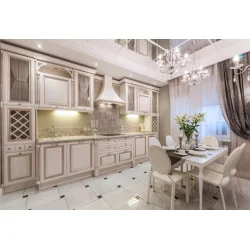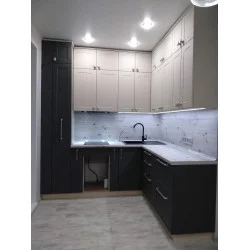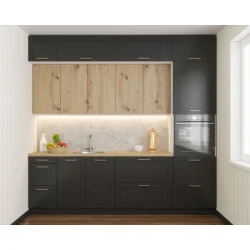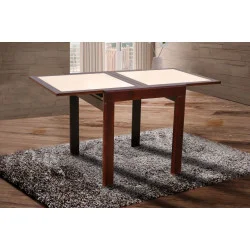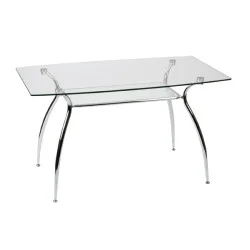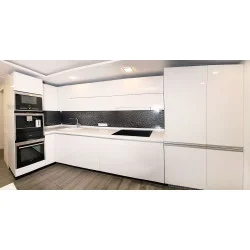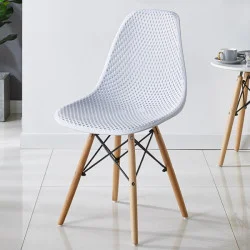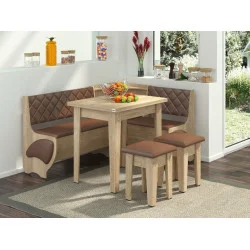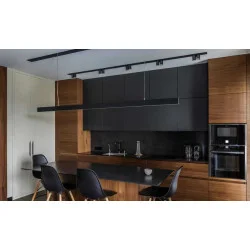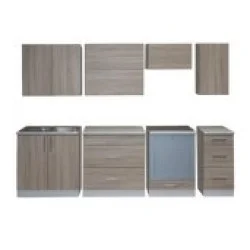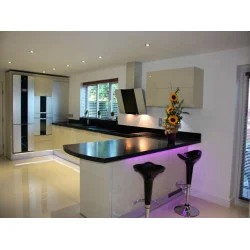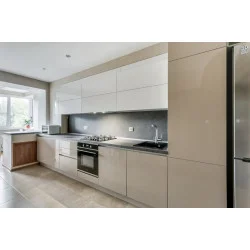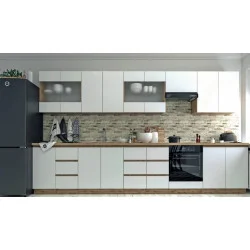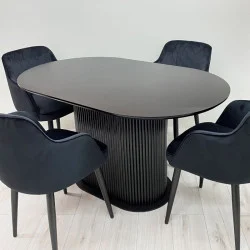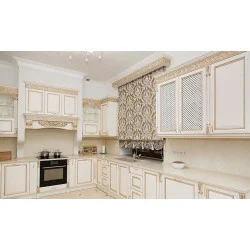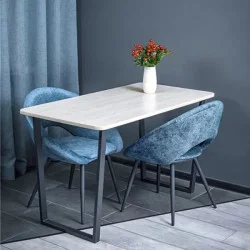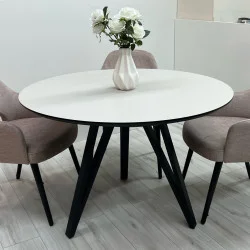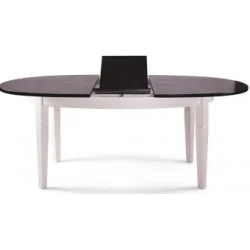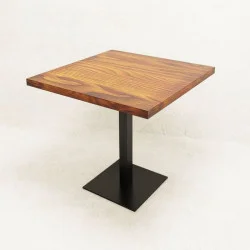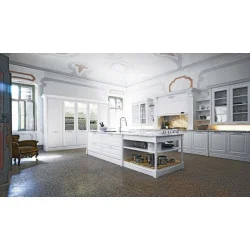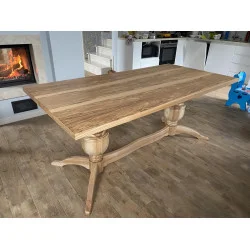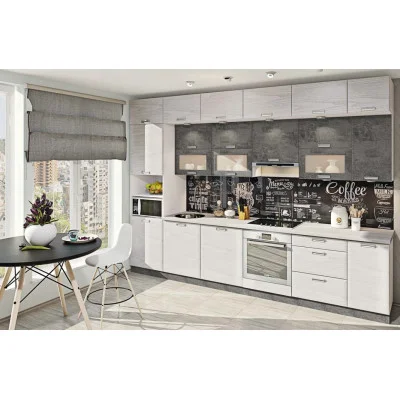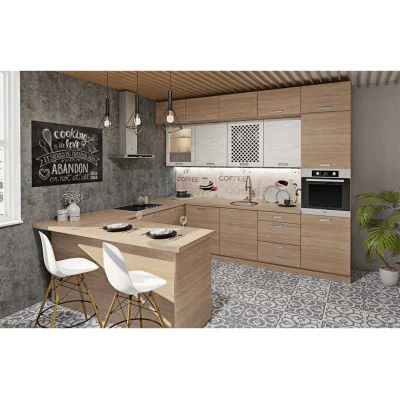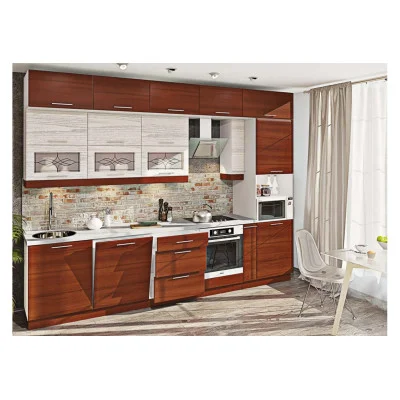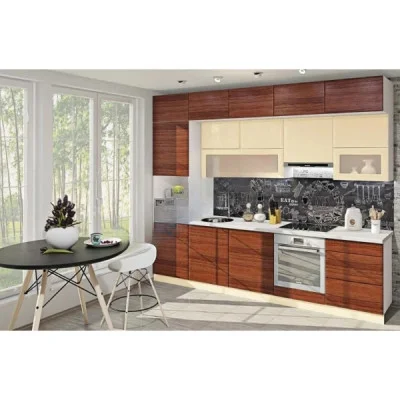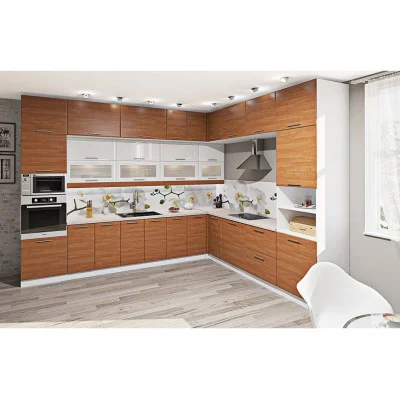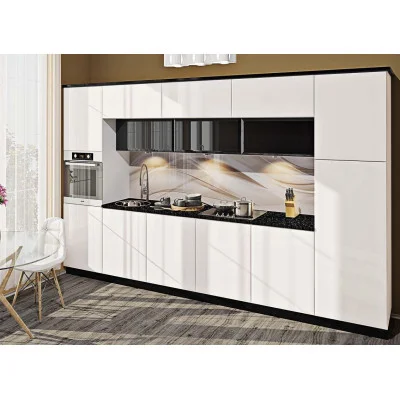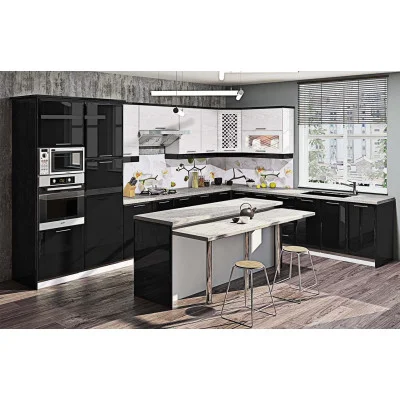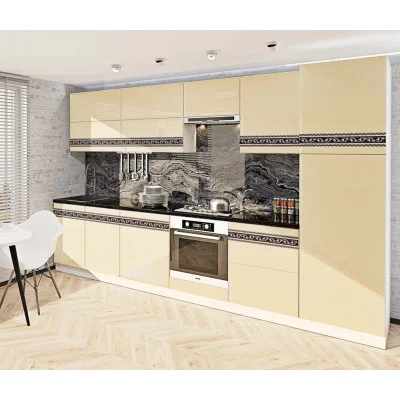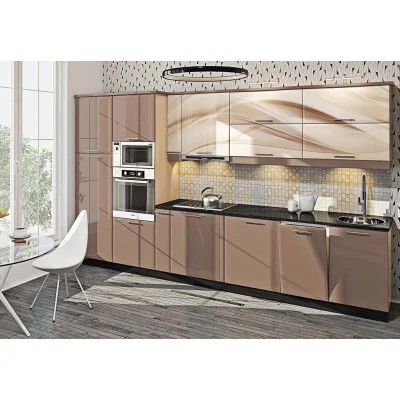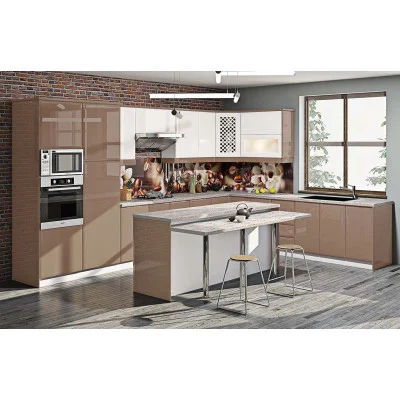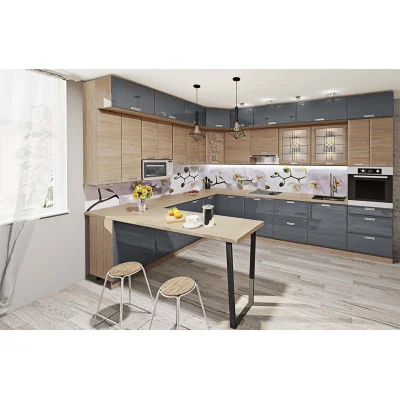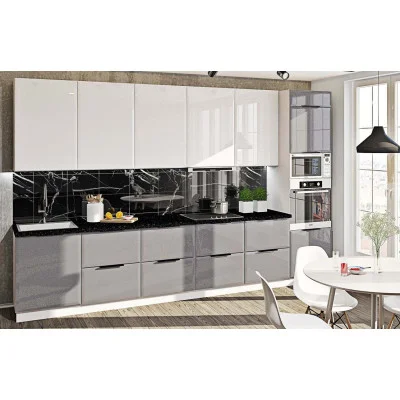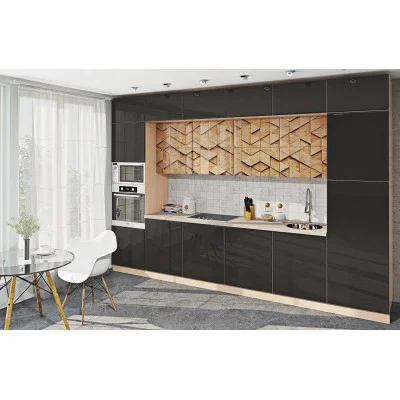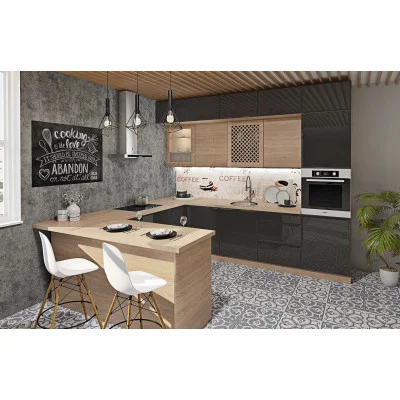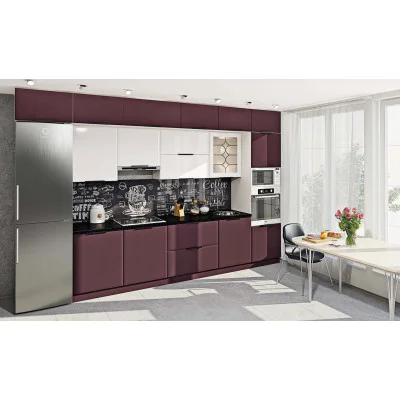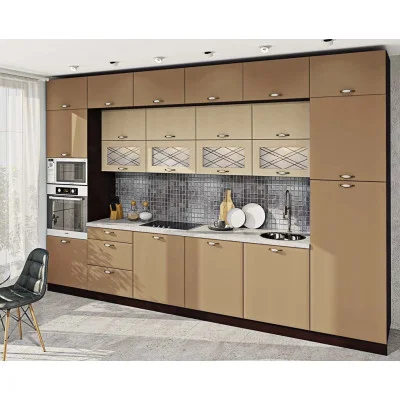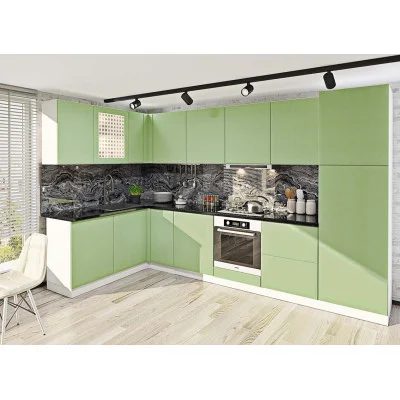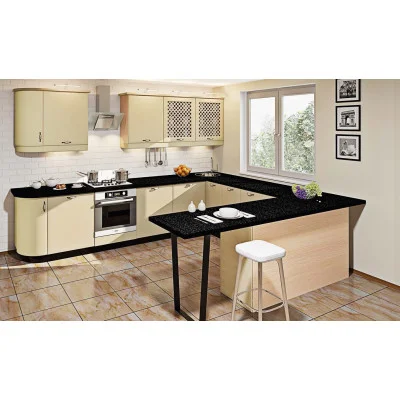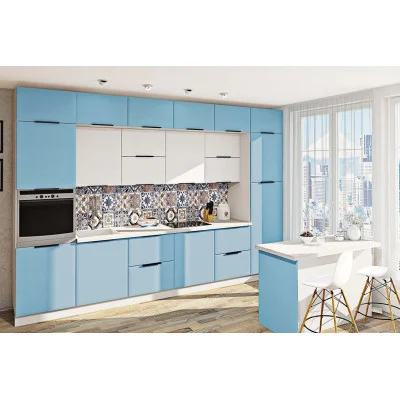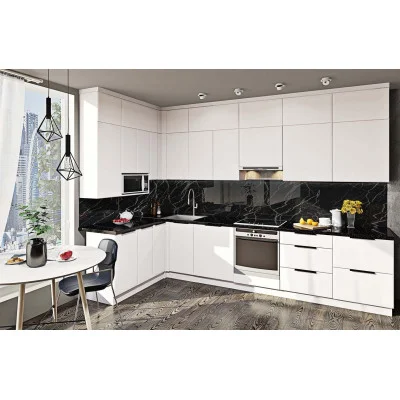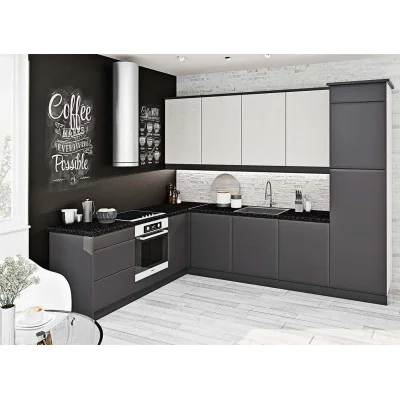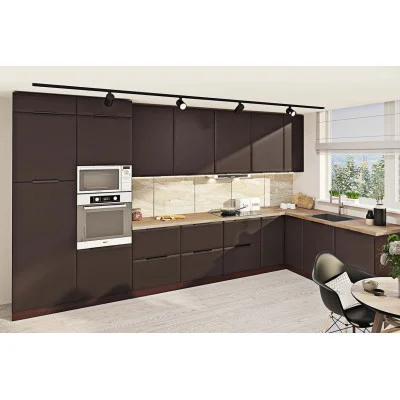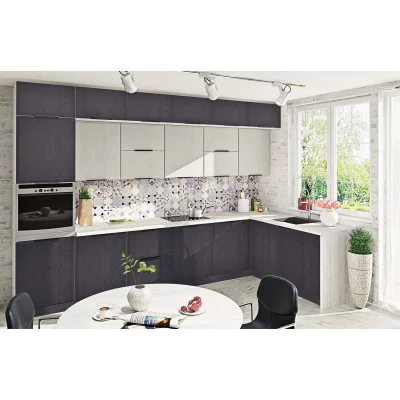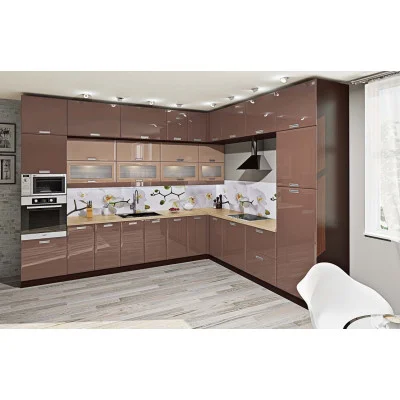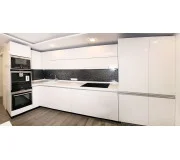
An industrial kitchen in a high-tech style is colorful in its own way: the dark color of the kitchen facade is mixed with the warm color of the solid wood countertop.
Soft tones balance dark colors
The industrial style in the kitchen is, so to speak, colorful. He makes extensive use of the color palette, but here too it is purely in the spirit of contrast. As you know, dark colors such as anthracite, brown, blue, petrol, and black are mainly used for wall decoration or furniture.
It is often believed that this creates a cool atmosphere, but in fact it is the opposite. A rustic, homely flavor appears, which only needs to be conveyed correctly in terms of color. To prevent your kitchen from becoming a dark, uncomfortable cave, you need warm and soft colors to balance it out.
A wall surface in delicate sherbet yellow, a brick-red refrigerator or a kitchen façade in an invigorating orange color form the optimal counterpart. Lots of green plants and natural materials give the room a natural touch. But neutral or warm touches are also welcome, such as white on the wall, cream-colored dishes or a pink kitchen clock.
Immerse yourself in a world of beautiful materials
When it comes to materials, the industrial style in the kitchen also uses a wide range that couldn't be more varied. An exposed clinker brick wall with red bricks brings warmth, but also a lot of rough, rugged charm. In front of it is a kitchen front made of shiny stainless steel or natural slate.
Solid wood is also ideal for this, but also looks atmospheric as a tabletop. This warm material, with its strong character, finds its counterbalance in black steel frames, hanging rods or furniture legs. This goes well with a durable, cool gray surface such as natural stone or concrete flooring, as well as dark parquet or, alternatively, laminate.
Black chalkboard walls are now a fixture in industrial kitchens, as they serve families not only as a vertical surface for kids to draw on, but also as a huge shopping list. In addition, cork is not only ideal as a coaster for cups or pots, but also proves extremely practical on the wall as a notice board.
Fewer templates and more flaws
Since a typical industrial kitchen comes with a huge selection of materials, it's rare to see a lot of patterns in this look. Because all materials usually have their own properties and textures. Rough, elastic, smooth, soft or forged - a completely special world of sensations opens up here.
In fact, there are already enough patterns in the room, so no more is needed. The most common causes are stains, scratches and even corrosion. So if an old pipe runs through your kitchen, it may have signs of rust. Is the paint peeling off somewhere? Or is the solid wood panel already showing obvious signs of wear? No problem for industrial style. All these obvious imperfections tell even more stories and give the room a special liveliness.
Reduced use of accessories
When it comes to details, there's no need to get lost in too many things. Since an industrial style kitchen has a lot to offer visually, accessories should be used wisely. The station clock that turns into a kitchen clock is a statement piece filled with vintage flair. Old water pipes with a new coat of paint make the perfect holder for kitchen utensils. They are equally suitable as a frame for free-hanging lights over countertops or kitchen islands. Alternatively, an old factory lantern is also nostalgic!


